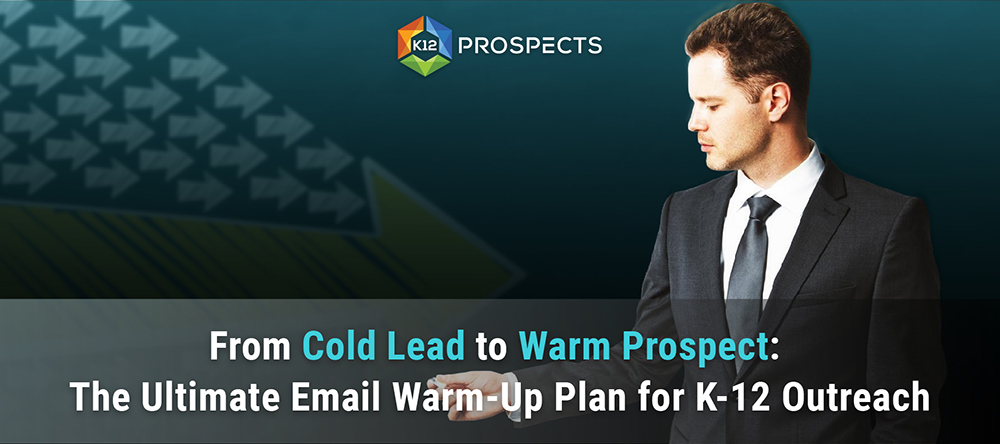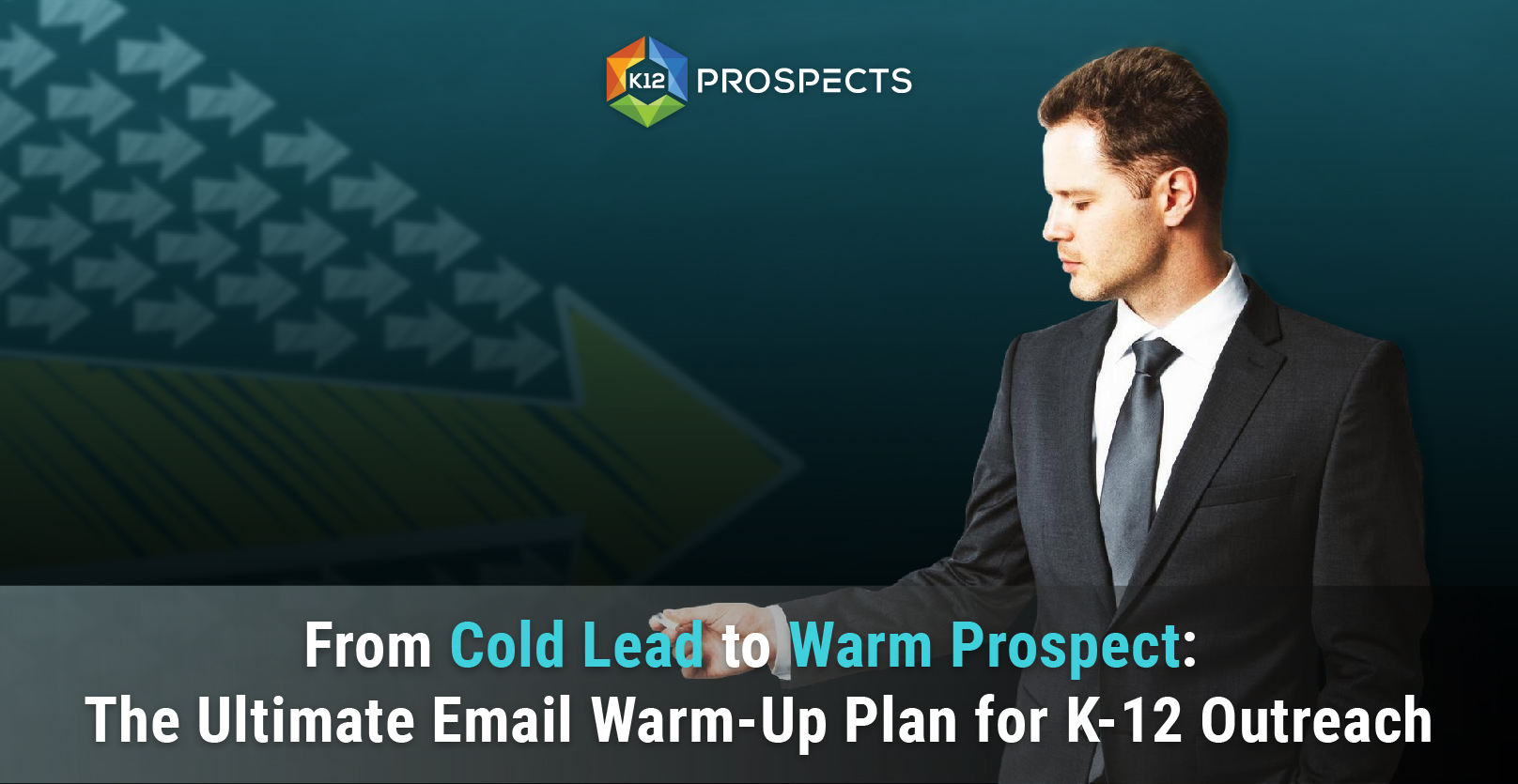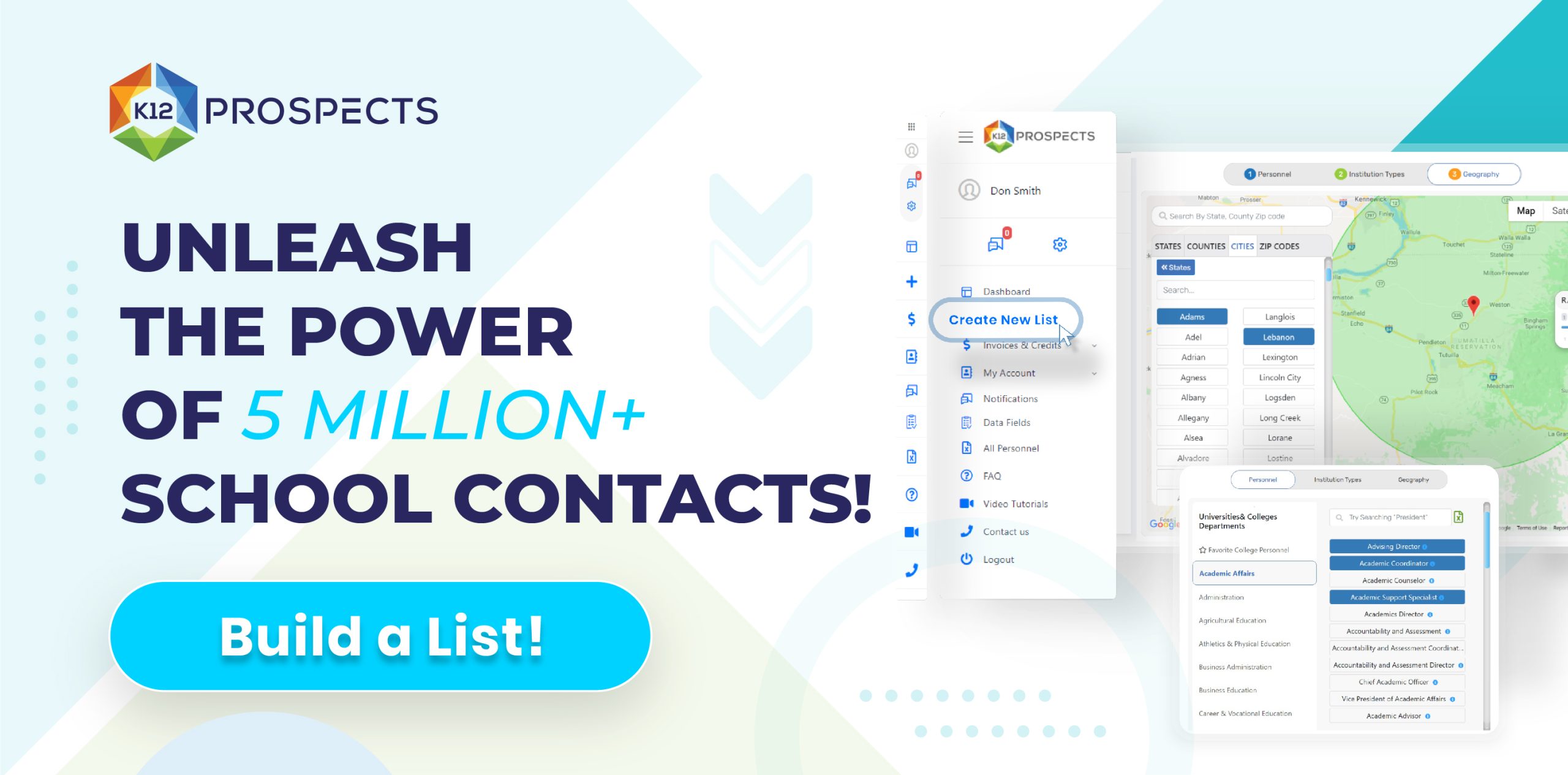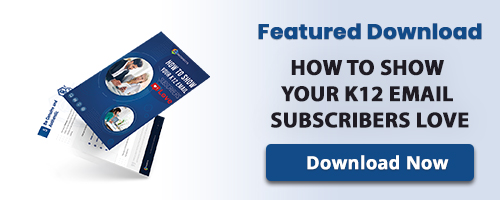From Cold Lead to Warm Prospect: The Ultimate Email Warm-Up Plan for K-12 Outreach

Congratulations on securing your list of contacts! You now have a direct line to the key decision-makers in the schools and districts you want to reach. However, before you hit “send” on a mass email campaign, there’s a critical process you must follow: the warm-up.
In the world of K-12 education, nearly every email address ends in a domain managed by either Google (Google Workspace for Education) or Microsoft (Office 365). These tech giants have incredibly sophisticated algorithms designed to protect their users from spam. Simply blasting your new list without a strategy is the fastest way to get your domain flaged and your messages sent straight to the junk folder.
This guide will provide you with a step-by-step plan to properly warm up your domain and your contacts. By following this process, you will send powerful positive signals to Google and Microsoft, dramatically improve your deliverability, and turn cold leads into engaged subscribers ready for a sales conversation.
The “Why”: Sender Reputation is Everything
Think of your email sending domain (e.g., @yourcompany.com) as having a credit score. This is your sender reputation. Every email you send is graded by inbox providers.
Positive signals that improve your reputation:
- Emails being opened.
- Links within the email being clicked.
- Emails receiving a reply.
- Your email being moved from a sub-folder (like Promotions) to the Primary inbox.
Negative signals that destroy your reputation:
- High bounce rates (invalid email addresses).
- Low open rates.
- Being marked as spam by the recipient (this is the most damaging signal).
- Emails being deleted without being opened.
A cold email campaign to a new list will naturally have lower engagement than an email to your existing customers. That’s why you must approach it with a deliberate, careful strategy to build a positive reputation from day one.
The Golden Rule: Isolate Your Cold Outreach
Before we get to the plan, we must establish the most important rule: NEVER mix your newly purchased cold contacts with your existing CRM contacts, paying customers, or warm subscribers.
This is not just a recommendation; it is essential for protecting your business.
Your primary corporate domain is a valuable asset. You use it to communicate with existing clients, partners, and inbound leads. The engagement rates for these emails are naturally high, giving your domain a strong, positive reputation.
If you dump a cold list into this same sending pool, the inevitable low open rates, bounces, and potential spam complaints will immediately poison your sender reputation. This can lead to your critical business emails—even invoices and support responses to your own customers—being flagged as spam.
The Solution: Conduct all cold outreach from a separate, dedicated subdomain. For example, if your main domain is awesomeedtech.com, set up a subdomain like updates.awesomeedtech.com or info.awesomeedtech.com for your cold campaigns, or use the same domain with a different organization ending like awesomeedtech.org different from your primary domain. This isolates the reputation-building process and protects your primary domain.
The K-12 Email Warm-Up Plan: A 4-Week Strategy
This plan is designed to be a gradual ramp-up, proving to Google and Microsoft that you are a legitimate sender providing value, not a spammer.
Phase 0: The Technical Foundation (Pre-Launch)
Before you send a single email, you must authenticate your sending domain (or subdomain). This is like showing your ID to the bouncer at a club; it proves you are who you say you are. Work with your IT department or domain provider to set up:
- SPF (Sender Policy Framework): An SPF record lists all the authorized servers that are allowed to send email on behalf of your domain.
- DKIM (DomainKeys Identified Mail): DKIM adds a digital signature to your emails, proving that the message hasn’t been tampered with and truly comes from your domain.
- DMARC (Domain-based Message Authentication, Reporting, and Conformance): DMARC tells inbox providers what to do with emails that fail SPF or DKIM checks (e.g., quarantine them or reject them). It builds on the other two and is a powerful signal of a trustworthy sender.
Sending emails without these three authentications is a major red flag for spam filters.
Phase 1: The Slow Ramp-Up (Weeks 1-2)
The key here is low volume and high value. Your goal is not to sell; it’s to get opens and clicks.
- Sending Volume: Start by sending just 30-50 emails per day. Use an email tool that allows you to spread these sends out over several hours, not all at once.
- Content Strategy: Your first email should be entirely about providing value. Do not ask for a meeting or a demo.
- Personalize: Use merge tags from your list like {first_name}, {school_name}, and {title}.
- Offer a Resource: Provide a link to a genuinely useful, free resource. This could be a blog post, a downloadable checklist, or a guide. The topic should be highly relevant to their role.
- Example: “A Principal’s Guide to Teacher Retention,” “The 2025 Classroom Technology Checklist,” or “How [Similar District] Solved [Common Problem].”
- Call-to-Action (CTA): Your only CTA should be to access the resource.
Phase 2: Gradual Acceleration (Weeks 3-4)
If your metrics from Phase 1 are healthy (e.g., open rates over 20%, bounce rates under 4%, and zero spam complaints), you can begin to slowly increase your volume.
- Sending Volume: Double your daily sending volume each week.
- Week 3: 100-150 emails per day.
- Week 4: 200-300 emails per day.
- Content Strategy: Continue to lead with value. You can now introduce a soft CTA that bridges the gap between a cold contact and a subscriber.
- The Goal: The purpose of cold emailing is to convert the contact into a subscriber. A subscriber is someone who has given you explicit permission to email them.
- Example CTA: “I hope you found last week’s guide useful. We publish insights like this regularly for K-12 leaders in our monthly newsletter. You can subscribe here to get them delivered to your inbox.”
- This CTA takes them to a landing page where they can willingly opt-in. This opt-in is the most powerful positive signal you can get.
Phase 3: Scaling and Pruning (Week 5+)
- Sending Volume: Continue to increase your daily volume by no more than 50-80% per week until you reach your desired scale.
- List Hygiene: This is crucial. Remove any contacts who have not opened any of your first 3-4 emails. Continuing to email unengaged contacts hurts your sender reputation and tells Google and Microsoft that people don’t want your mail. A smaller, engaged list is always better than a large, unengaged one.
The Ultimate Goal: Convert, Then Sell
Remember the funnel: Cold Lead -> Engaged Contact -> Subscriber -> Sales Prospect.
The entire purpose of this warm-up process is to move contacts from the first stage to the third. Once a contact from your list clicks a link and formally subscribes to your newsletter or resource hub, they have given you permission to market to them.
At this point, you can move them from your “cold outreach” system into your primary CRM or marketing automation platform. They are now a warm, opted-in lead that can be entered into your regular marketing sequences and targeted by your sales team.
By respecting the inbox, providing genuine value, and following a patient, methodical warm-up plan, you will transform your data into a powerful and sustainable pipeline for growth.



